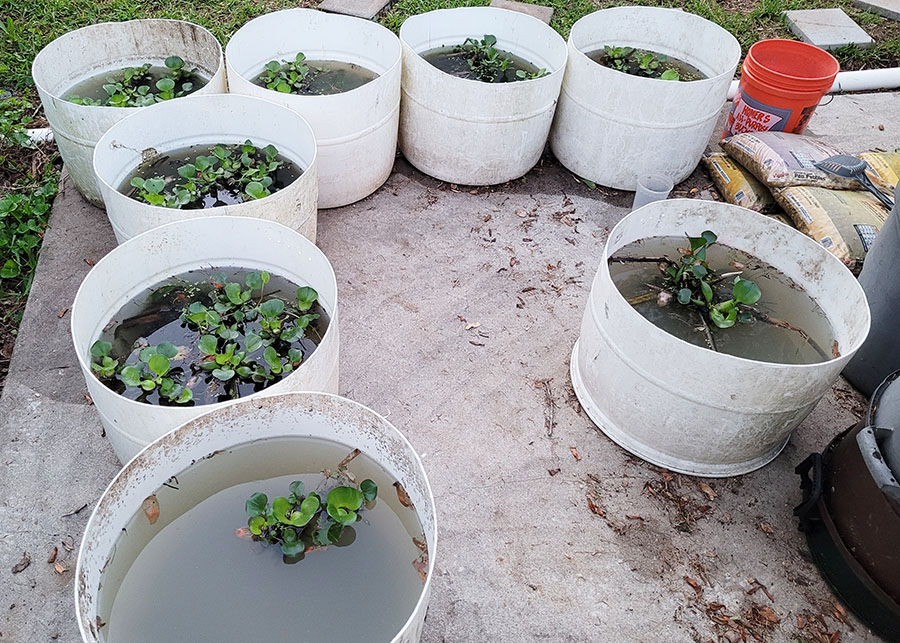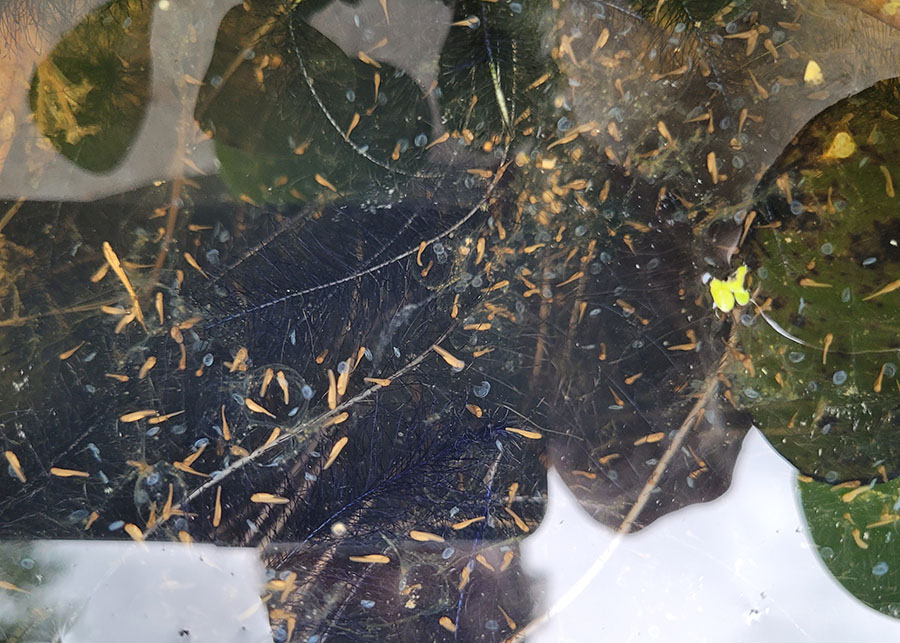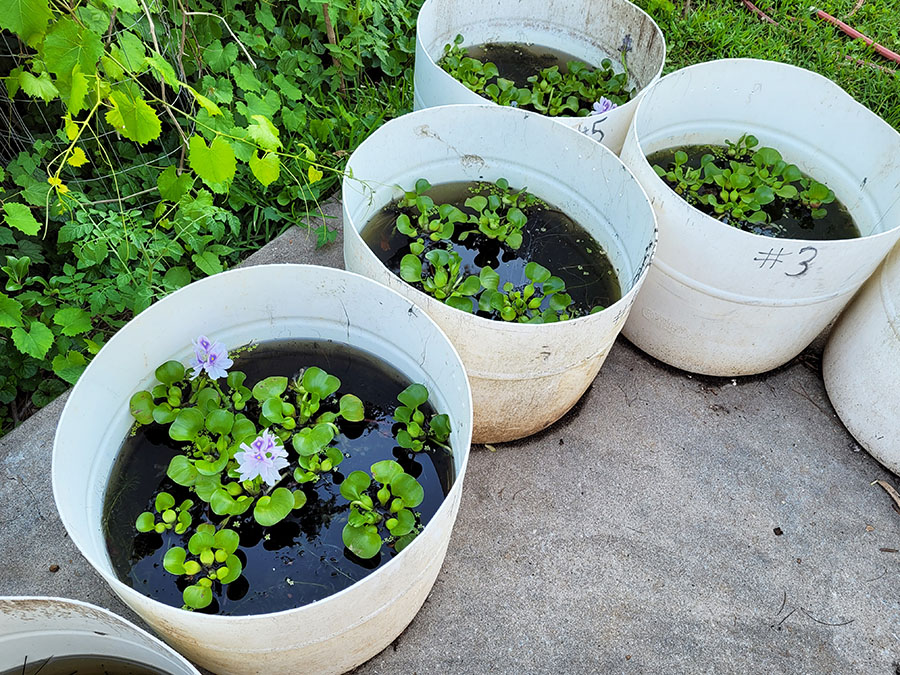I had some downcycled plastic barrels that I had previously used as rain barrels before discovering how much maintenance it took to ensure mosquitoes weren’t reproducing in them.
I cut these in half and plugged any holes and set up eight of these as breeding tanks for mosquito fish and tree frogs on my back patio.
The total volume of material in each tank is less than 15 to 20 gallons, with a rim of about 10 inches extending above the top of the water.
I added water and clay to each of these tanks and then seeded the microflora and fauna with mud and water samples from the ponds.
I let that brew for a week, and then I added plugs of aquatic plants from the ponds: water hyacinth, elodea, duckweed, and hair algae.
I also added more clay and topsoil for the minerals and to increase the biomass.
I let that brew for a few weeks so that the plants and microflora could grow and build up enough to support a few mosquitofish.
The goal was to let the plants and microbes get established and grow for as long as possible before adding the mosquitofish, but eventually the appearance of mosquito larva made it necessary to add the fish.

Initial Results: Mosquitofish
The initial results indicate that the tanks will function as expected in terms of mosquitofish but not support enough individuals in each tank to be a genetically-stable population.
Four adult mosquitofish seems to be all a tank can support because they eat the mosquito eggs as soon as they are laid.
However, it is possible to let a massive amount of mosquito larva to build up in a tank of that size and have more larvae that could be eaten by four fish before some of the larva molt into adult mosquitos.
That being said, four adult mosquitofish can eat many (hundreds) of mosquito larva in a day depending on the size of the larva.
The conclusion is that it might not be practical to manage the mosquitofish populations in the tanks other than to let them breed to capacity and eat their young just like they do in ponds.

Initial Results: Tadpoles
Many clutches of eggs laid by Green Frogs and Cope’s Gray Tree Frogs. Green Frog tadpoles might be physically displacing the tree frog tadpoles, or eating most available algae.
We are currently losing maybe 50% of Green Frog eggs to the Amphibian Chytrid Fungus.
I am not sure about the eggs of Cope’s Gray Tree Frog. One large clutch appeared to lose hardly any. It’s hard to say on the other clutches. Most clutches get dispersed an hidden in the plants due to the activity of the adult Green Frogs.
Initial Results: Plants
The elodea and duckweed are growing about as rapidly as in the ponds, when sufficient soil. The water hyacinth covers the surface and has to be pulled up and thinned every few weeks.
The hair algae that was previously overwhelming has completely disappeared, and the water in the tanks ranges from clear to very clear. The macro plants are absorbing all available nutrients, and the tadpoles are consuming all algae, microbial mats, and other food.
I am adding 1 to 2 quarts of topsoil when I thin the Water Hyacinth.
That might not add enough potassium and phosphorus back into the system or be bio-available rapidly enough.
I need to do an experiment with chemical fertilizer.
